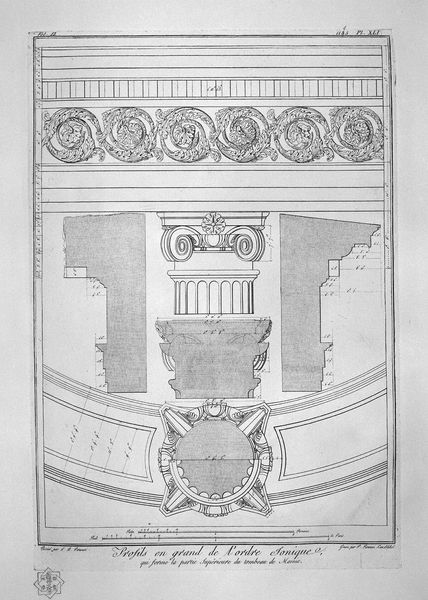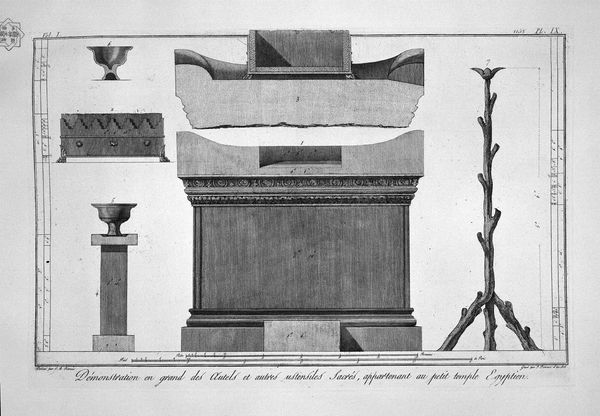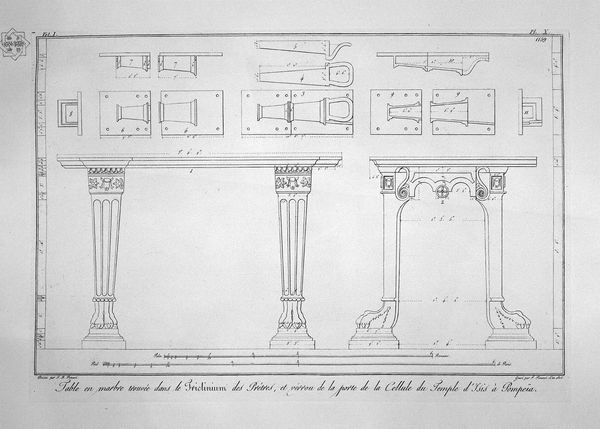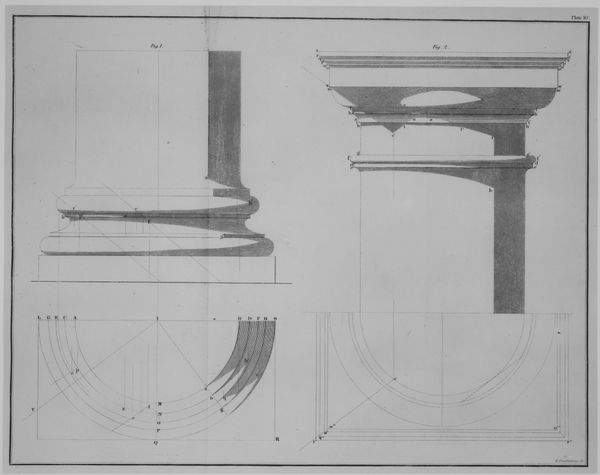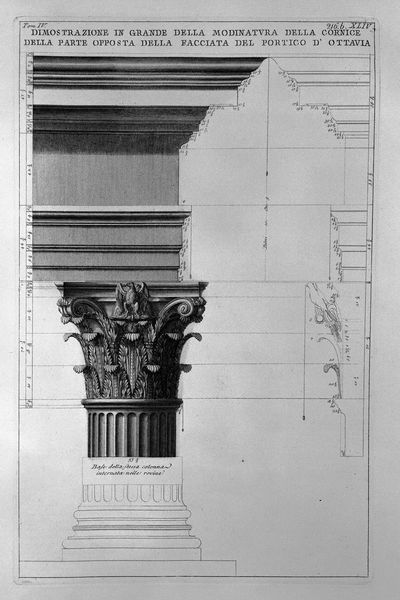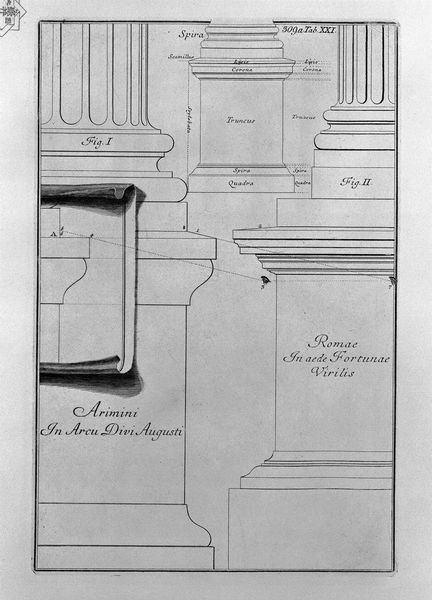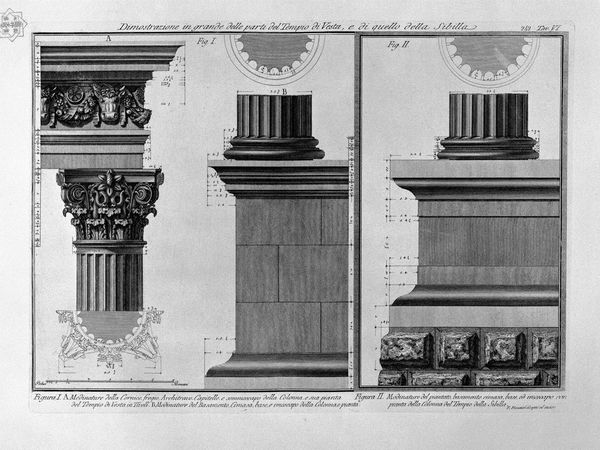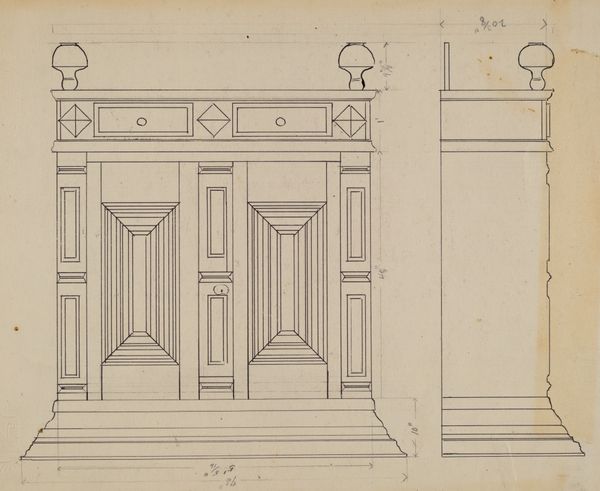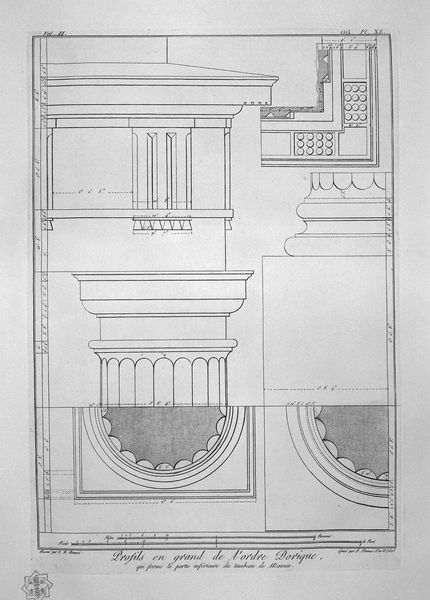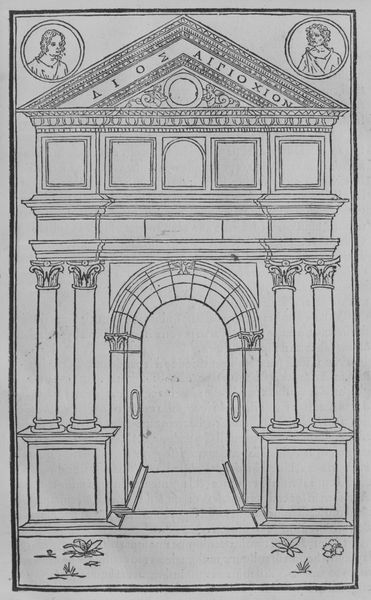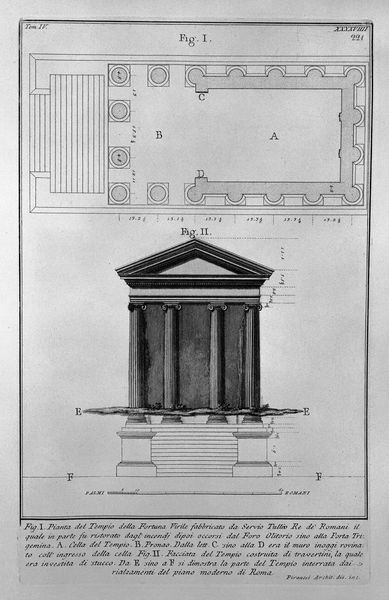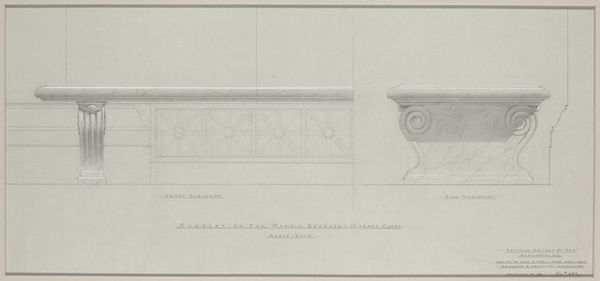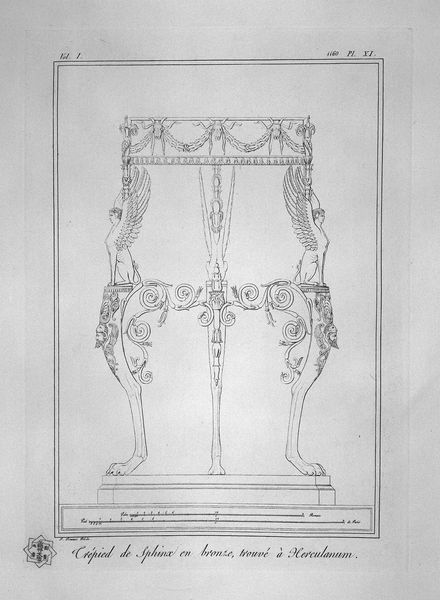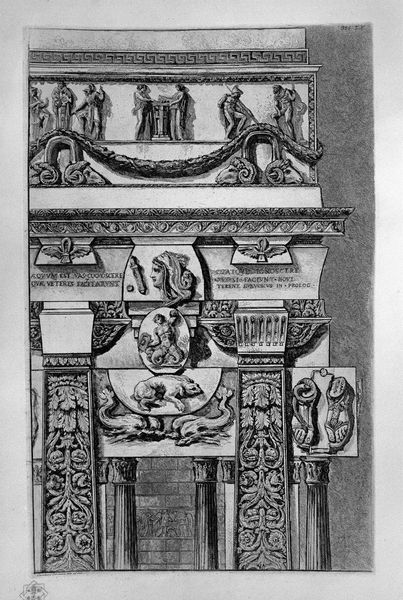
drawing, print, paper, ink, engraving, architecture
#
drawing
#
neoclacissism
# print
#
classical-realism
#
paper
#
form
#
ink
#
geometric
#
column
#
architectural section drawing
#
architectural drawing
#
line
#
architecture drawing
#
engraving
#
architecture
Copyright: Public domain
Curator: Immediately, I'm struck by the detail here. The etching feels incredibly precise, almost forensic in its examination of architectural form. It’s Piranesi’s “General sections of the three previous houses”. He seems to be pulling apart historical styles. Editor: Well, that's the perfect word for it: forensic! It's like an autopsy of a building. Deconstructed, diagrammed… and a little spooky. It’s so clinical, but then you see that lone figure draped across one of the capitals and there's this weird, almost melancholic atmosphere that creeps in. Curator: Exactly. The neo-classical movement at its most obsessive, laid bare. We can see how the visual language of power and order is being meticulously documented, categorized. The medium itself, printmaking, facilitated the widespread consumption of these designs, impacting architectural trends and ideals. The man-hours needed... Editor: Yes, there is so much labour involved... and the finished product. It's interesting, though, isn't it? This kind of rigorous dissection simultaneously feels like a celebration and a critique. The way Piranesi lays out each layer of detail gives each design a ghostlike existence, capturing how ideas are communicated between individuals in society through art-making. Almost dreamlike. Curator: In terms of production, it reflects the rising status of printed architectural designs during this era, moving architecture from an art executed by trades to an object that could be disseminated more broadly through print. The consumption and creation of knowledge democratized at a distance. Editor: But the lines themselves...they feel so hesitant and tender, too. There’s something deeply personal in the way each curve is rendered. It almost romanticizes geometry. Curator: A romance forged by social shifts, enabled by new modes of industrialised art creation. I'd almost call this a pre-digital diagram—with the artist serving as both draughtsman and disseminator of the content. Editor: A fascinating intersection. I now see not just documentation, but poetry in structure. Curator: Precisely. And that brings a fuller appreciation of both craft and cultural function to how buildings of the time were produced.
Comments
No comments
Be the first to comment and join the conversation on the ultimate creative platform.
